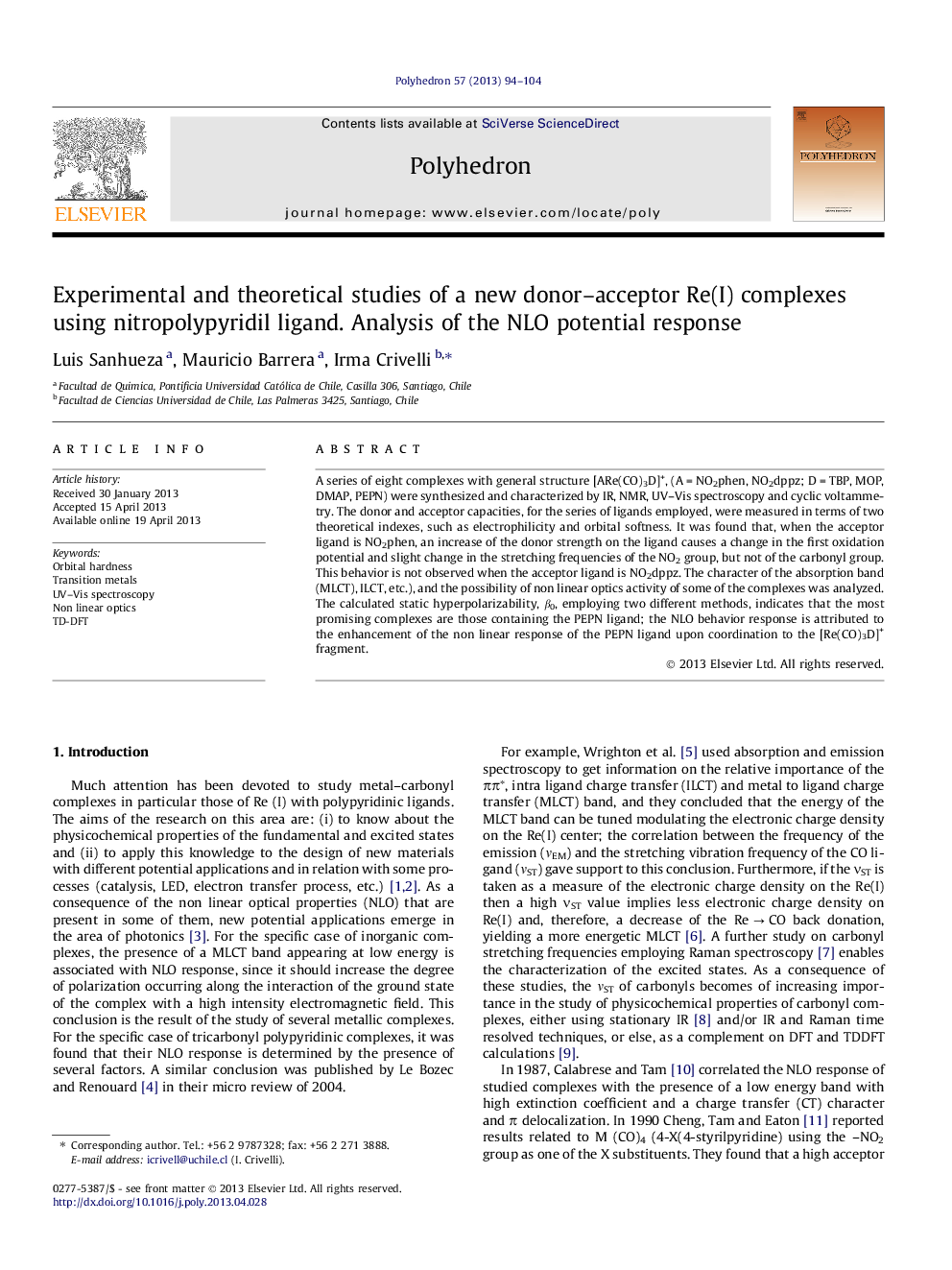| Article ID | Journal | Published Year | Pages | File Type |
|---|---|---|---|---|
| 1338268 | Polyhedron | 2013 | 11 Pages |
A series of eight complexes with general structure [ARe(CO)3D]+, (A = NO2phen, NO2dppz; D = TBP, MOP, DMAP, PEPN) were synthesized and characterized by IR, NMR, UV–Vis spectroscopy and cyclic voltammetry. The donor and acceptor capacities, for the series of ligands employed, were measured in terms of two theoretical indexes, such as electrophilicity and orbital softness. It was found that, when the acceptor ligand is NO2phen, an increase of the donor strength on the ligand causes a change in the first oxidation potential and slight change in the stretching frequencies of the NO2 group, but not of the carbonyl group. This behavior is not observed when the acceptor ligand is NO2dppz. The character of the absorption band (MLCT), ILCT, etc.), and the possibility of non linear optics activity of some of the complexes was analyzed. The calculated static hyperpolarizability, β0, employing two different methods, indicates that the most promising complexes are those containing the PEPN ligand; the NLO behavior response is attributed to the enhancement of the non linear response of the PEPN ligand upon coordination to the [Re(CO)3D]+ fragment.
Graphical abstractA series of eight new Rhenium(I) tricarbonyl complexes with general structure [(D)Re(CO)3(A)]+ (D = NO2dppz, NO2phen and A = TBP, MOP, DMP, PEPN) were synthesized and characterized by UV–Vis, IR, 1H NMR spectroscopy.. Complexes with D = PEPN exhibit and intense band near 440 nm and in according to DFT calculation it would correspond to an ILCT. A TDDFT study reveal an enhancement of the NLO of the PEPN ligand when coordinated to the Rhenium(I) complexes.Figure optionsDownload full-size imageDownload as PowerPoint slide
